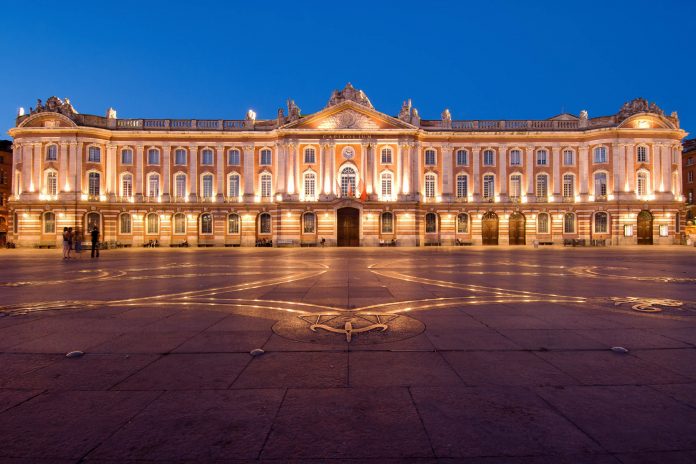Das Kapitol am prachtvollen Place du Capitole im Zentrum von Toulouse gehört zu den bekanntesten Gebäuden der rosaroten Stadt. Es beherbergt hinter seiner eindrucksvollen Fassade nicht nur die Stadtregierung, sondern auch unvorstellbare Kunstschätze.
„Le Capitole“ ist einer der Gründe, aus dem Toulouse auch „rosarote Stadt“ genannt wird. Schon im Mittelalter spielte sich das Leben von Toulouse auf dem Place du Capitole ab. Bis heute ist der grandiose Platz, der vom ebenso grandiosen Kapitol dominiert wird, Schauplatz zahlreicher Veranstaltungen und Versammlungen.
Inhaltsverzeichnis
BILDER: Kapitol in Toulouse
Fotogalerie: Kapitol in Toulouse
Errichtung des Kapitols in Toulouse
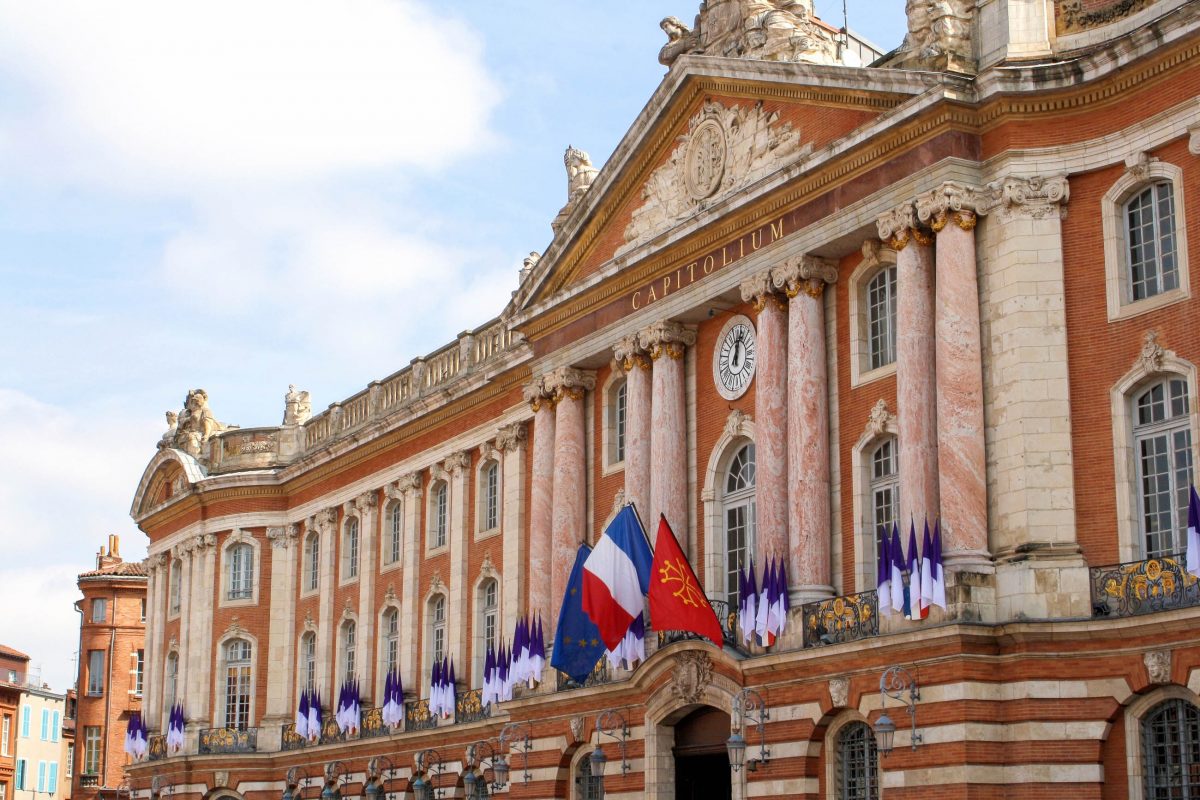
Als offizieller Sitz der Stadtregierung wurde ein Vorgänger-Bau des heutigen Kapitols bereits im Jahr 1190 errichtet. Toulouse war damals eine aufstrebende Stadt, deren Wohlstand und Einfluss zunehmend wuchs.
Die heutige Fassade aus rotem Backstein, rosa Marmor und weiße Kalkstein – 135 Meter feinster Neoklassizismus – stammt aus dem Jahr 1750. Sie dominiert nach wie vor den mittlerweile rund 2 Hektar großen Place du Capitole.
Auf der Rückseite des Kapitols erhebt sich ein wehrhafter Glockenturm, der im Jahr 1873 von Eugène Viollet-le-Duc errichtet wurde und heute einen traumhaften Rundumblick über Toulouse bietet. Ehemals als Kerker genutzt ist hier auch die Touristeninformation von Toulouse zu finden.
Symbolik am Place de Capitole

Über dem Eingang des Kapitols wehen die französische, die europäische und die okzitanische Flagge. Letztere ist, ebenso wie das riesige okzitanische Kreuz am Boden des Platzes, ein Tribut an die historische Kultur und Sprache Langue d’Oc.
Auch die Mauern und schmiedeeisernen Balkone des Kapitols sind mit zahlreichen Figuren, Wappen und Symbolen übersät:
- Die acht marmornen Säulen über dem Portal repräsentieren die acht Stadträte von Toulouse.
- Am zentralen Giebel halten zwei Engel das Stadtwappen.
- Rechts weisen Allegorien von Komödie und Tragödie auf die Oper von Toulouse hin.
- Links thronen Clémence Isaure, die legendäre Gründerin der Akademie der Blumenspiele von Toulouse, und die griechische Göttin Athene.
Sehenswürdigkeiten im Kapitol von Toulouse
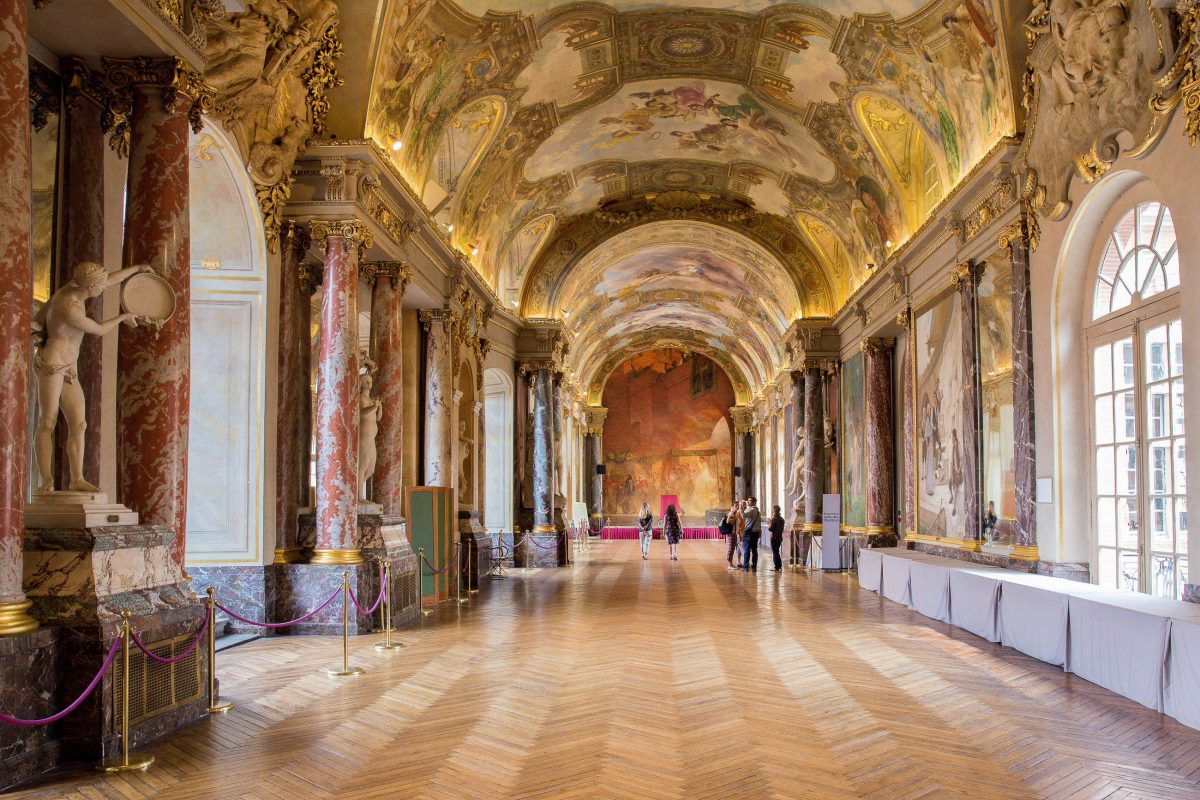
Das Rathaus von Toulouse ist nicht nur von außen atemberaubend. Auch das prächtige Interieur ließ schon so manchen Besucher vor Staunen die Luft anhalten. Nahezu jeder Quadratmeter von Wänden und Decken ist mit vergoldeten Schnitzereien und aufwändigen Gemälden aus dem 19. Jahrhundert geschmückt.
Einige der Gebäudeteile, wie zum Beispiel Henri IV Hof und Tor, stammen noch aus dem 16. Jahrhundert. Dieser Innenhof schrieb blutige Geschichte, als Henri II de Montmorency, der Gouverneur von Languedoc und letzte Herzog seiner Blutlinie, zur Strafe für seiner Rebellion gegen Kardinal Richelieu und König Ludwig XIII. geköpft wurde. Eine Gedenktafel erinnert heute an dieses tragische Ereignis.
Kunst im Stiegenhaus
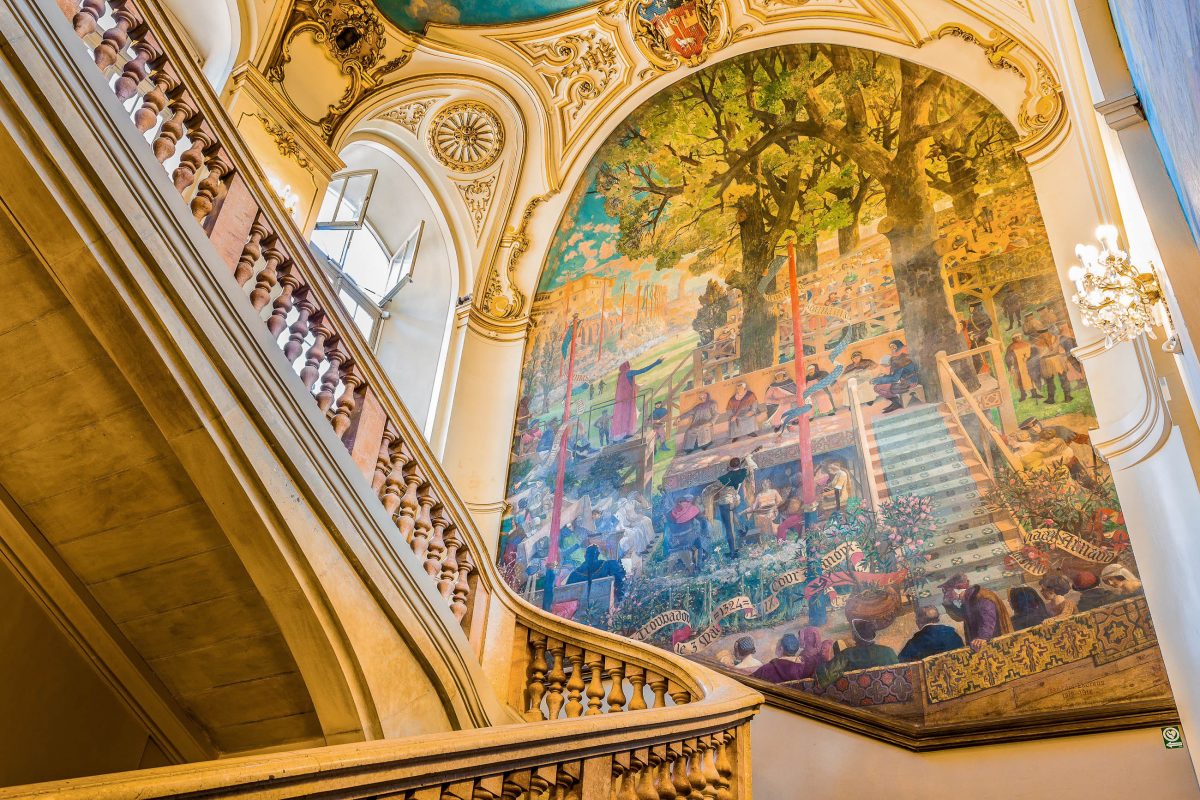
Im Stiegenhaus wird der Besucher von Jean-Paul Laurens’ farbenprächtigem Kunstwerk „Jeux floraux de Toulouse“ empfangen. Clémence Isaure, schon am Giebel des Kapitols als Statue verewigt, taucht auch hier wieder auf, und zwar gleich daneben am Deckengemälde „Triumph der Clémence Isaure“.
Kunst in den Prunksälen

Besonders sehenswert ist auch der Gervais-Saal, der mit seinen Gemälden über die 20-, 40- und 60jährige Liebe gerne als Trauungssaal verwendet wird.
Ebenso beliebt für Hochzeiten ist der unglaublich dekorative Salle des Illustres, in dem Werke von Jean-Paul Laurens, Benjamin Constant, Jean-Andre Rixens, Paul J. Gervais, Edouard Debat-Ponsan, Henri Paul Pujol Rachou und Henri Martin zu finden sind.
Kunst des Impressionismus
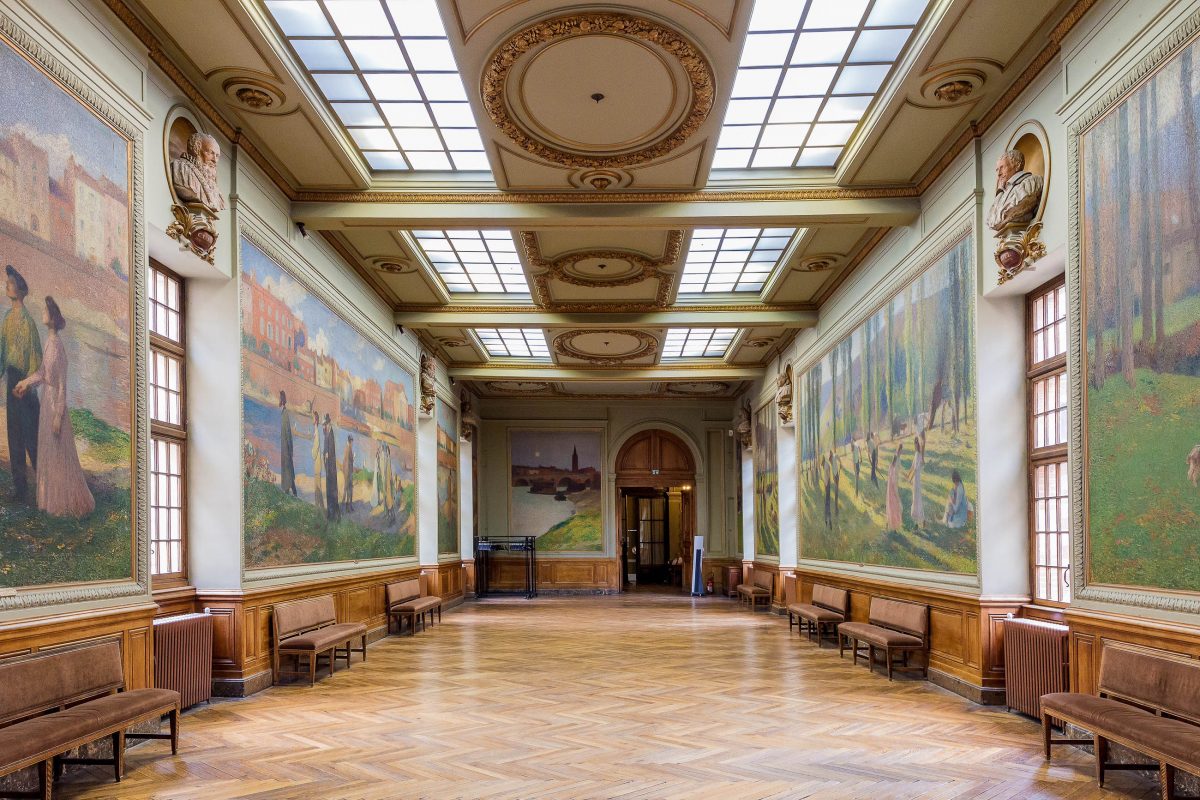
Apropos Henri Martin: Mit dem Salle Henri Martin ist dem französischen Impressionisten ein eigener Raum gewidmet, in dem 10 seiner Werke in Großformat bewundert werden können.
Tipp: An jedem ersten Sonntag im Monat, dem autofreien Tag in Toulouse, können die grandiosen Räumlichkeiten des Kapitols besichtigt werden.
Théâtre du Capitole de Toulouse – Kultur im Kapitol
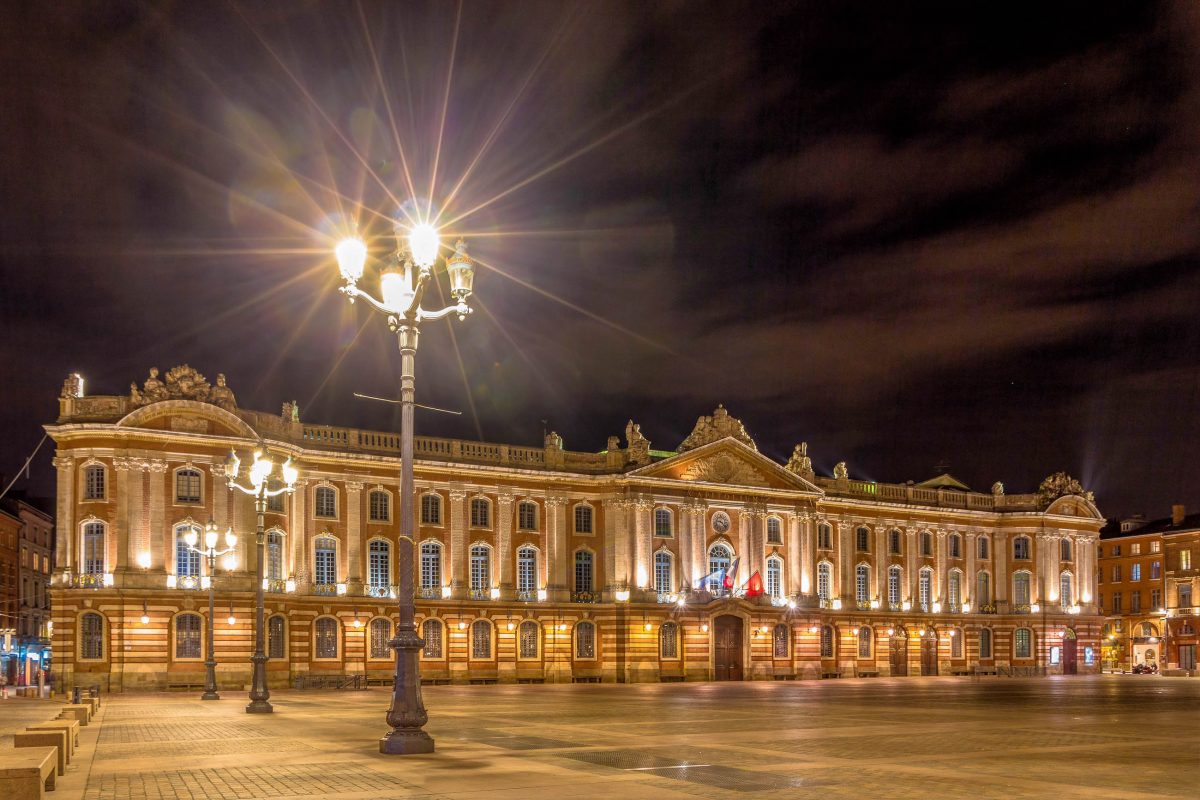
Das Kapitol von Toulouse beherbergt nicht nur das städtische Rathaus, sondern auch die Oper von Toulouse, sowie das städtische Ballett und Symphonie-Orchester. 1736 wurde hier der erste Bühnensaal eingerichtet, der ab sofort für Opern- und Ballett-Vorführungen genutzt wurde. Knapp 1200 Zuschauern bietet das Theater heute Platz, nachdem es 1923 nach einem Brand restauriert wurde.

